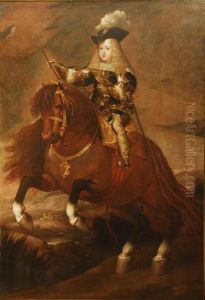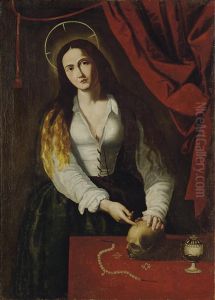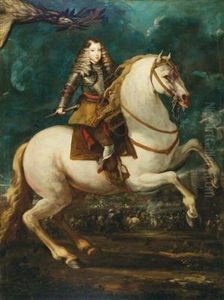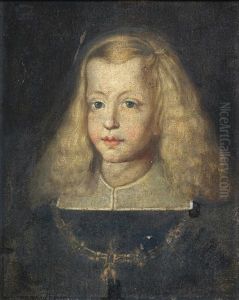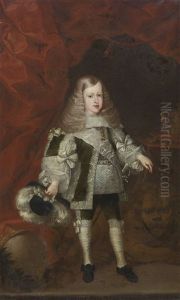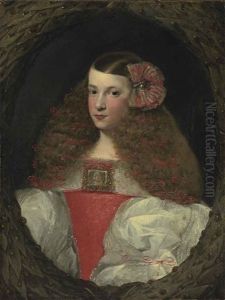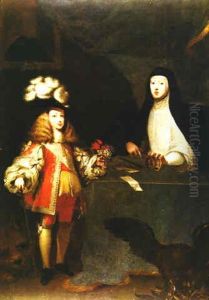Sebastian De Herrera Barnuevo Paintings
Sebastián de Herrera Barnuevo was a Spanish painter, architect, sculptor, and etcher who was born on December 17, 1619, in Madrid. He was a prominent figure in the Spanish Baroque period, which was characterized by its grandeur, drama, and emotion. Herrera Barnuevo is often considered one of the most important Spanish artists of his time, although his work is less well known today outside of Spain.
Herrera Barnuevo was the son of the sculptor and architect Antonio de Herrera. Under the guidance of his father, he began his artistic training at a young age. He later studied painting under the guidance of Juan Bautista Maíno, a respected painter of the Spanish court. Herrera Barnuevo's style was influenced by the works of Maíno and other contemporaries such as Velázquez and Alonso Cano. His early work mainly consisted of religious themes, which was a common focus among Baroque artists due to the Counter-Reformation movement within the Catholic Church.
Throughout his career, Herrera Barnuevo served the Spanish court and worked on various projects for King Philip IV. He was appointed as the court painter in 1656, succeeding Velázquez in the role. In addition to his painting, he was also involved in architectural and sculptural works. Notably, he worked on the design and decoration of the Royal Monastery of La Encarnación in Madrid.
Herrera Barnuevo's architectural style was marked by its elaborate decoration and use of classical forms, which were typical of the Baroque period. As a sculptor, he created several notable works, including the statue of Saint John the Baptist for the Cathedral of Toledo. In his etchings, he demonstrated a mastery of line and detail that was praised by his contemporaries.
Despite his significant contributions to the arts, Herrera Barnuevo's works were often overshadowed by those of his more famous peers. Nonetheless, his artistry continued to be appreciated by the Spanish court and the church, and he remained a respected figure until his death on November 13, 1671, in Madrid. Today, his works can be found in various museums and collections in Spain, offering insights into the rich artistic heritage of the Baroque era.
